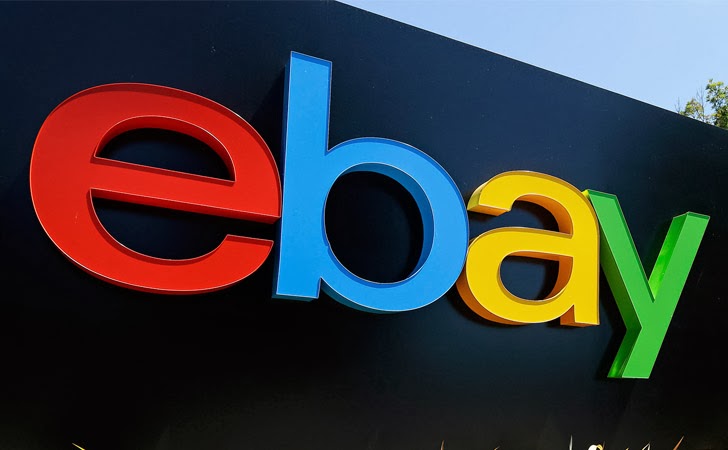How To Buy Cheap LEGO - eBay Buying Guide
18th July 2022

When I tell a non-AFOL about my LEGO collecting, the cost invariably comes up, and is most often greeted by slightly widened eyes and open mouth. LEGO certainly has a premium price, but you are buying a quality product. Anyone who has handled or built a LEGO set can attest to that.
However, there are ways you can minimize your spending. For example, buying directly from the LEGO Group is usually not the most cost-effective. Authorised retailers often have significant reductions on selected sets, with 20% or more off the RRP not being uncommon. For retired sets and preowned LEGO, there are several options, with the most frequently used being Bricklink, Facebook Marketplace, and eBay. Of these three, eBay is the only platform offering an auction format, which provides the best opportunity for getting LEGO at prices significantly lower than the market rate. However, if you're not careful, you can also end up paying way over the odds.
In this article, we provide some essential buying tips to help you navigate the pitfalls of eBay and secure some bargains.
1. Do Your Research
The starting point when buying anything, LEGO or otherwise, is to do your research and know what a fair price is. This eliminates the risk that you will pay over the odds and end up with buyers remorse. Handily, eBay offers the ability to filter your search to show sold items, which is very useful for seeing how much people have recently paid for a particular LEGO set or minifigure.
The most useful platform for learning how much you should pay is Bricklink, as this is the world’s largest online marketplace for buying and selling LEGO. Any set or minifigure can be found by entering the item name or number into the search bar. It’s then simply a matter of navigating to the “Price Guide” tab below the item’s picture to see the sales history. Those unfamiliar with Bricklink might be a little bamboozled by all the data on display, but the key information of interest is the last 6 months worth of sales for new and used condition items. The Avg. Price number is the key metric to bear in mind when buying any LEGO because if you see the item in question for less than this, it means you have in all likelihood snagged a reasonable deal.
While the distinction between new and used is clear with LEGO sets, the line is more blurred with minifigures, as what counts as which can be interpreted differently by different sellers. Therefore, a used condition listing can sometimes be as good as a “new condition “ listing. This is important to be aware of when buying minifigures.
Armed with all this knowledge you can easily weed out the overly optimistic sellers and focus on where the value is.
2. Pick Your Moment
When buying something via an auction, a sure way to get it cheaply is if there is no-one else around to outbid you. Traffic on eBay fluctuates during the day and throughout the week. The busiest times are in the evenings when people are typically at home and don’t have the distractions of work or commuting. Thus, 7pm to 9pm is the peak period. Weekends are also busier than weekdays, with Sunday evenings being the most popular time of all. Therefore, if you want to nab a LEGO bargain, the best times to look are early in the morning or late at night. Good deals can also be found during working hours when people may be too preoccupied to be scrolling through eBay.
3. Cast Your Net Wide
There are thousands of LEGO listings every day on eBay, many of which won’t be of interest. Therefore, you’ll be forgiven for typing the set / minifigure name or number into the search bar and hitting enter. eBay will then go away and find the most relevant listings and present them in order of “Best Match”. What you’re left with is essentially the most visible items for sale, which everyone after the same thing as you is going to see.
One of the best ways to secure a bargain is to clock on to the items that other people are likely to miss. This means listings that are poorly titled, categorised, or displayed. To do this we always recommend using a broad search strategy, such as just typing “LEGO” and filtering on “Ending Soonest”. This ensures that nothing escapes through the net. Then it’s just a matter of taking your time and leaving no stone unturned.
4. Buy in Bulk
Listings come in all shapes and sizes, from a single part or minifigure to a huge bundle or joblot. Like most goods, buying LEGO in bulk often allows you to achieve economies of scale and get a better price per piece. Large listings can be unattractive to many buyers because of either the higher cost, greater storage requirements, or because they don’t contain exactly what they’re after. And as we’ve mentioned previously, less competition means lower prices.
The reasons for wanting to sell may also be different for people behind bulk listings. Someone selling individual sets and minifigures is more likely to be motivated by a healthy profit and are probably operating a side hustle, while bulk sellers could be parting with their LEGO due to changes in their personal life and the need for either money or space. They could also have stumbled upon it in their loft and have less knowledge of the value of what they are selling. This means they might offer a generous “Buy It Now” price or set a low starting bid.
If you are not necessarily fussed about having pristine, unopened sets or complete builds, then bundle and joblot sales made up of loose bricks or partially assembled sets can be worthwhile looking out for. This is because they are much more difficult to price than complete listings. From the photos you may also spot a diamond in the rough, such as a rare part or minifigure hidden amongst the LEGO rubble. Going back to Point 1, knowing your subject area well can really pay dividends here.
5. Collection Only
Another way to find value is to focus on listings which only offer collecting the item in person. People are less likely to bid on an item that is far away from where they live because of the fuel and hassle cost of collection. If they do bid, they’ll factor this in and won’t be as competitive as nearer buyers. Therefore, if you are in close proximity to the seller, you have a strong advantage and can end up getting a great deal.
6. Patience
Last but not least, good things come to those who wait. Maybe you will get lucky, but in most cases the perfect deal doesn’t present itself straight away. If you’re prepared to be patient and not rush into bidding on your must-have set straight away, you’re less likely to pay more than you should. It's also important to know when to stop bidding and walk away, so setting yourself a limit based on well-founded market knowledge is a must.
Disclaimer: This article or any others on brickranker.com should not be considered financial advice and investing in LEGO is risky.

Graham is a passionate LEGO collector, who has a penchant for the Castle, Pirates, and Western themes. You can usually find him monitoring the latest developments and giving his opinion on what's hot and not in the LEGO world.
Comments
Affiliate links
If you found this site useful please consider supporting Brick Ranker by using the affliate links below when purchasing LEGO.
Latest investing

The Fastest Growing LEGO Minifigures in Value (December 2023)
We've crunched the numbers and below is a list of the fastest growing LEGO minifigures in terms of value when…

The Fastest Growing LEGO Sets in Value (December 2023)
We've crunched the numbers and below is a list of the fastest growing LEGO sets in terms of value when…

The Fastest Growing LEGO Minifigures in Value (November 2023)
We've crunched the numbers and below is a list of the fastest growing LEGO minifigures in terms of value when…